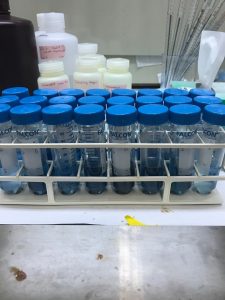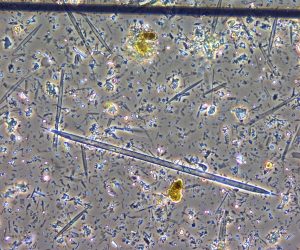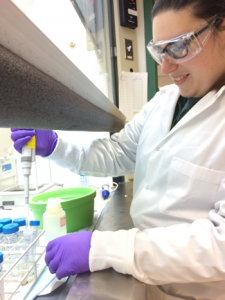Effects of Phytoplankton Composition and Biominerals on the Episodic Pulses of Particulate Organic Carbon to Abyssal Depths
A Thesis Defense by Cynthia Michaud
Monday, November 18th, 2019 at 3pm
MLML Seminar Room
Cynthia is a master’s student under the guidance of Colleen Durkin and Tom Conolly in the Physical Oceanography lab. She received her B.S. from the University of Rhode Island in Marine Biology and Geological Oceanography in 2017. She arrived at MLML in the fall of 2017 and served as the student body treasurer her second year. She has presented her work on phytoplankton and biomineral contribution to the sequestration of carbon to the deep ocean at the recent Ocean Carbon and Biogeochemistry workshop at Woods Hole. She has also given talks to young students about being a scientist in hope of peaking the students’ interest in a marine science field. She hopes to continue her outreach along with staying in the research field.
Thesis Abstract:
The biological pump transports carbon to depth through physical mixing and gravitational sinking of organic particles. Carbon that sinks to the seafloor is consumed by benthic organisms who rely on the detrital particles as their source of food. Station M is a long-term deep-sea study site in the Northeast Pacific where large episodic pulses of particulate organic carbon (POC) sinking to the sea floor have been recorded for the past 30 years. The episodic pulses of POC have increased in frequency and magnitude over the past decade, driving a long-term increase in carbon export observed in sediment traps deployed at this location. The goal of this study is to resolve the role of phytoplankton in driving the high POC export pulses. Samples collected by sediment traps were analyzed by microscopy to determine phytoplankton community composition within sinking material. Sinking particles contain a different community composition during high flux events compared with before or after flux events. Particles sinking before or after high flux periods were relatively more enriched in phytoplankton cells compared to particles sinking during high flux events, but the phytoplankton cells are transporting the same amount of carbon between the two samples. Biogenic silica (BSi) and particulate inorganic carbon (PIC) were measured in the particles to test whether mineral ballasting may be driving the large pulses of POC sinking to depth. There was a stronger correlation between BSi and POC than PIC and POC showing that BSi may be playing a bigger role at Station M. Phytoplankton are relatively less enriched in high flux events, but we discovered that large diatoms including Rhizosolenia are sinking relatively more in the high flux events. Large cells may be driving this high flux event because they contain more carbon than 1 small cell and also contain more BSi making aggregates that they are a part of denser and sink more quickly. We have evidence that BSi is ballasting the cells more so in high flux events, while PIC is not following as close a relationship as BSi. These high flux events seem to be increasing because upwelling events and turbulence can be a cause for large cell disruption causing them to sink more when they are not in an ideal growing situation. The turbulence happens during upwelling which is affected by climate change.




